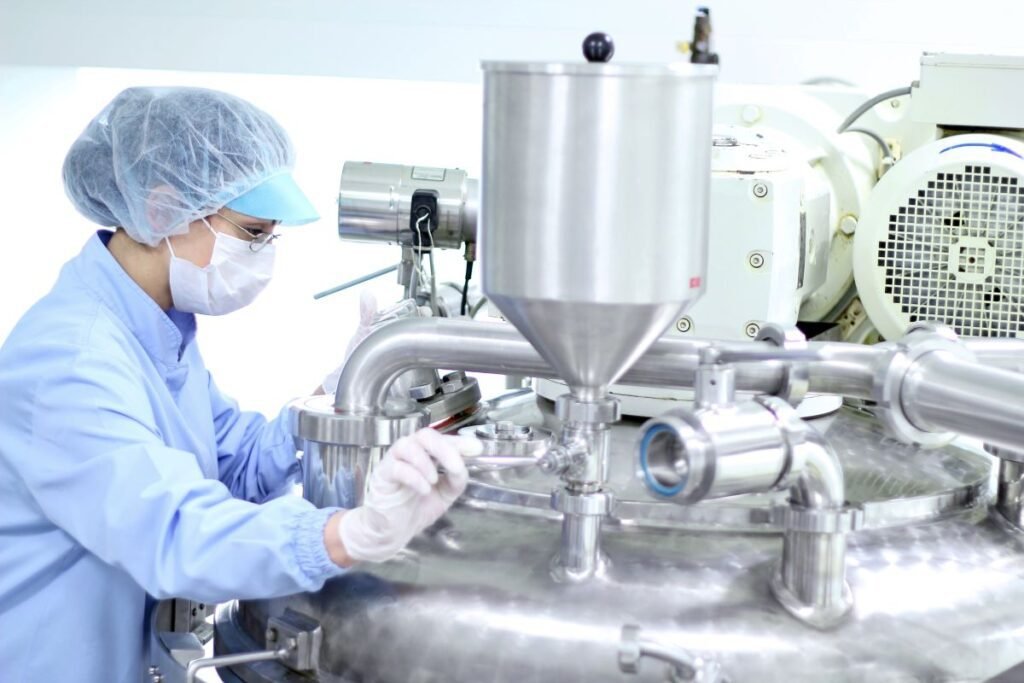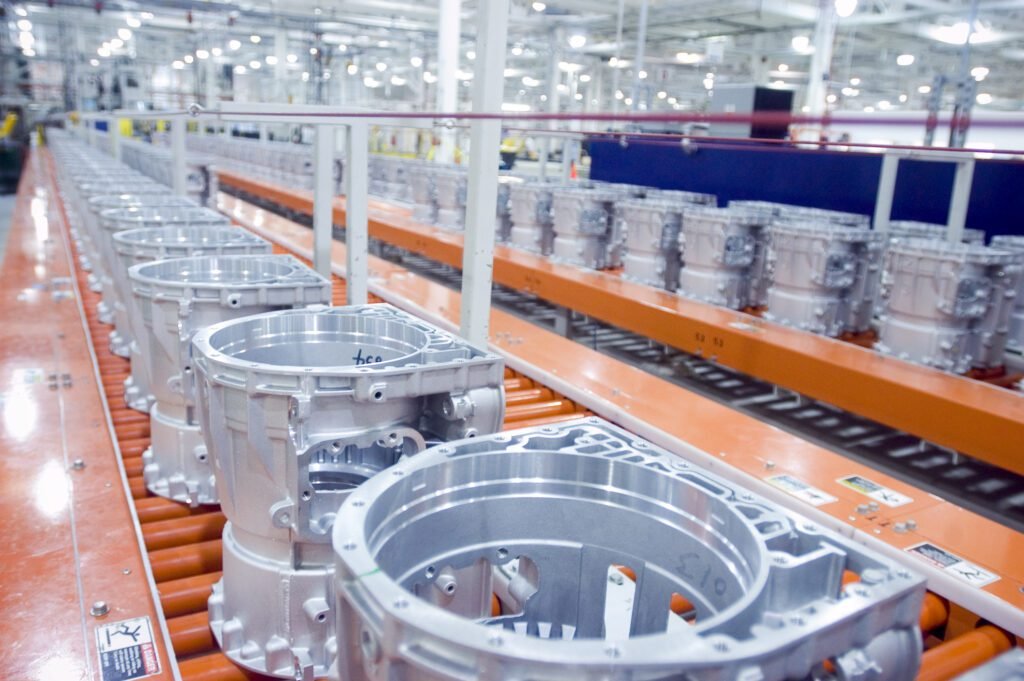

What is Scope 3 Carbon Emissions and 7 Effective Ways to Reduce it
Table of Contents
- What is Scope 3 Carbon Emission?
- Why are Scope 3 Emissions Important?
- Why Reducing Scope 3 Emissions is Crucial?
- How do Scope 3 Emissions represent an Opportunity for Manufacturers?
- Key Takeaways from this Blog
- Scope 3 Carbon Emissions in Maufacturing Examples
- How Mavarick Supports Scope 3 Reporting and Reduction Efforts
- 7 Effective Ways to Reduce Scope 3 Emissions
- 1. Engage with Suppliers to Encourage Emission Reduction
- 2. Optimize Transportation and Logistics
- 3. Implement Circular Economy Principles
- 4. Increase Energy Efficiency Across the Supply Chain
- 5. Shift to Digital & Remote Operations
- 6. Encourage Sustainable Commuting for Employees
- 7. Engage in Sustainable Procurement
- Benefits of Reducing Scope 3 Emissions for Private Businesses
- 1. Pinpoint Scope 3 Emission Hotspots Across the Value Chain
- 2. Evaluate Supplier Performance in Sustainability
- 3. Drive Data-informed Decision Making
- 4. Fuel Product Innovation
- 5. Strengthen Climate Strategies
- Benefits of Reducing Scope 3 Emissions for Private Businesses
- 1. Prioritise High Impact Decarbonisation Efforts
- 2. Collaboration with Suppliers
- 3. Leveraging Purchasing Power to Influence Change
- 4. Encourage Employee Participation to Encourage Reduction
- 5. Provide Transparency to Sustainability Efforts
- 6. Contributing to National Net Zero Goals
- Conclusion
In the journey toward net-zero targets, Scope 3 emissions have become a crucial part of the carbon footprint for most organisations. These indirect emissions, often overlooked, extend beyond a company’s direct operations and include emissions associated with upstream and downstream activities such as supply chain logistics, waste generation, and end-of-life treatment of products.
Did you know?
According to the GHG Protocol, Scope 3 emissions can account for up to 90% of a company’s total emissions. It also accounts for an average of 75% of a company's footprint particularly for organisations e.g. manufacturers, who rely on extensive supply chains.
Despite the impact, Scope 3 emissions are challenging to measure and manage due to their indirect nature. This blog provides an in-depth look at Scope 3 emissions, why they matter, and, most importantly, seven effective ways to reduce them. For more insights on sustainability and carbon management, visit our blog.




What is Scope 3 Carbon Emission?
Scope 3 emissions cover all indirect emissions that are not directly produced by a company but are essential to its value chain. They are grouped into 15 categories under the GHG Protocol’s guidance, which includes upstream emissions (like those from suppliers and employee commuting) and downstream emissions such as product use and disposal. These emissions are broken down into multiple categories, from purchased goods and services to waste and transportation, each affecting a company’s overall emissions in different ways. By encompassing both upstream and downstream activities, Scope 3 captures the entirety of a company’s impact on the environment, making it essential for organisations seeking comprehensive ESG reporting. Fact Check According to the UN Global Compact, only about 25% of Fortune 500 companies have fully integrated Scope 3 emissions into their sustainability reporting, despite its significance. This gap highlights the challenges that organisations face in capturing these complex emissions.
Why are Scope 3 Emissions Important?
Scope 3 emissions help account for the carbon emissions from the entire lifecycle of the products that you help produce. From sourcing of raw materials, to production of precursor parts, to the usage of the end product, and eventually, disposal. The world needs to understand the total carbon footprint of all manufactured products. To do this, we need manufacturers to report on their own emissions, but also on emissions from the rest of the value chain. Requiring manufacturers to report on the emissions of their suppliers helps in two ways. For one, it helps to keep everyone honest. Secondly, it helps to generate the sharpest understanding of the total emissions involved with the entire value chain.Why Reducing Scope 3 Emissions is Crucial?
With global emissions regulations tightening, organisations face increased scrutiny over their carbon footprints.- Reducing Scope 3 emissions is vital for comprehensive ESG reporting, improving stakeholder trust, and aligning with regulatory demands like the EU’s Corporate Sustainability Reporting Directive (CSRD).
- Companies that actively track and reduce Scope 3 emissions not only improve their sustainability image but also mitigate financial and regulatory risks.
How do Scope 3 Emissions represent an Opportunity for Manufacturers?
Reporting on the carbon emissions of your suppliers could prove difficult at first. Not all suppliers have adopted a solution for continuous carbon reporting. But this is where the opportunity lies. If you have a solution for continuous reporting on your Scope 1 and Scope 2 emissions, you will have an easier time providing your buyers with timely and accurate reporting data. Especially if your carbon reporting system can directly integrate with your buyers’ reporting solution. Your Scope 1 and Scope 2 emissions represent your buyers’ Scope 3 emissions. The more you can present yourself as a simple and accurate solution for providing your own emissions data to your buyers, the more attractive you will be, as a supplier. Read here to know more about our take on the list of the best carbon reporting software in 2024. Fact: The EPA highlights that businesses can reduce up to 70% of their emissions by focusing on Scope 3, thereby making a significant environmental impact while also enhancing brand reputation.Key Takeaways from this Blog
- Scope 3 emissions account for up to 90% of a company’s carbon footprint, largely from indirect sources.
- Measuring and managing these emissions is complex, requiring specialized strategies.
- Key reduction methods include targeted supplier engagement, logistics optimization, and enhanced energy efficiency.
- Effective Scope 3 management strengthens sustainability efforts and regulatory alignment.
- Addressing Scope 3 emissions enhances brand integrity and stakeholder confidence.
Scope 3 Carbon Emissions in Maufacturing Examples
Scope 3 emissions refer to the greenhouse gas emissions that a business indirectly causes, originating from activities not directly controlled by the organization. These emissions cover a wide range of sources and typically represent the majority of a company’s total emissions footprint. Key examples include:- Supply Chain: Emissions generated from sourcing, manufacturing, and transporting raw materials and components to production facilities.
- Product Usage: Emissions from the energy used by customers during the lifetime of products sold by the business.
- Disposal: Emissions related to the disposal or recycling processes of products at the end of their lifecycle.
- Transportation: Emissions from the logistics of moving goods, such as the transport of clothing to retail stores.
- Energy: Emissions linked to energy consumption during manufacturing, growing raw materials, and customer use of products.
- Leased Assets: Emissions from assets that a business leases but does not directly control.
- Business Travel and Employee Commuting: Emissions generated from travel by employees, including commutes and business-related trips.
- Waste: Emissions arising from waste produced during the business’s operational processes.

How Mavarick Supports Scope 3 Reporting and Reduction Efforts
Scope 3 emissions represent a critical but challenging area of a company’s carbon footprint, often comprising the largest portion of emissions. Measuring and reducing these emissions is essential for organisations dedicated to impactful sustainability practices. Mavarick’s platform simplifies this process by offering comprehensive tools to measure, manage, and reduce Scope 3 emissions, helping businesses and public entities not only meet regulatory requirements but also drive genuine environmental progress. With Mavarick’s integrated platform, organisations can:- Identify and Prioritise Emission Hotspots: Mavarick’s advanced tools provide visibility into high-emission areas within your supply chain, enabling you to develop prioritised strategies where they’ll have the most impact.
- Engage Suppliers in Sustainability Goals: Mavarick facilitates supplier collaboration, helping you partner with those leading in sustainable practices while promoting transparency and accountability.
- Empower Data-Driven Decisions: Through data insights, Mavarick enables more informed choices across procurement, logistics, and product development, focusing on areas that yield the highest reductions.
- Drive Innovation and Compliance: Mavarick’s ESG reporting solutions help organisations meet evolving regulatory requirements and inspire innovation toward energy-efficient, sustainable products.

7 Effective Ways to Reduce Scope 3 Emissions
1. Engage with Suppliers to Encourage Emission Reduction
Suppliers play a crucial role in a company’s carbon footprint, especially in manufacturing where raw materials and outsourced services contribute heavily to Scope 3 emissions. Manufacturers can address a significant portion of their Scope 3 emissions through proactive supplier engagement. And how can we do that?- Supplier Partnerships: Begin by establishing transparent dialogues with suppliers regarding their emission levels and sustainability practices. Encourage them to set their own reduction targets, which can, in turn, support your Scope 3 goals.
- Provide Incentives: Businesses can motivate suppliers by offering incentives, such as extended contracts or preferred supplier status for meeting emission reduction milestones.
2. Optimize Transportation and Logistics
Transportation is a significant source of Scope 3 emissions, especially for companies involved in global manufacturing and distribution. Optimisation of logistics and the adoption of low-carbon transport options can help organisations minimise this impact. What are the ways to optimise?- Efficient Routing: Implementing software to optimise delivery routes can significantly reduce emissions by minimising travel distances and fuel consumption. Studies from National Grid show that route optimisation alone can cut emissions by 5-10%.
- Switch to Lower-Carbon Transportation Modes: Encourage the use of rail, sea freight, or hybrid/electric vehicles instead of traditional trucking. Though these options may take longer, they are often less carbon-intensive, helping lower Scope 3 emissions from transport.
3. Implement Circular Economy Principles
Designing products with recyclability and longevity in mind can reduce downstream Scope 3 emissions associated with end-of-life product treatment. How do you do this?- Sustainable Design: Choose materials that are recyclable, biodegradable, or have a lower carbon footprint. For example, using aluminium or steel that can be repeatedly recycled minimises the carbon impact over time.
- Product Take-Back Programmes: Offer programmes for consumers to return products for reuse, recycling, or safe disposal. Companies like HP and Apple have implemented successful take-back programmes that help reduce emissions from waste.
4. Increase Energy Efficiency Across the Supply Chain
Energy efficiency improvements across the supply chain can significantly impact Scope 3 emissions, particularly for energy-intensive industries. How do you tackle this?- Assess Supplier Energy Use: Ask suppliers to conduct energy audits and implement energy efficiency practices. The GHG Protocol recommends prioritising suppliers in countries or industries where the use of energy is higher.
- Invest in Green Energy: Encourage or support your suppliers in switching to renewable energy sources like solar or wind. According to the EPA, renewable energy can reduce carbon emissions by 30-50% for manufacturers.
5. Shift to Digital & Remote Operations
Reducing travel emissions by embracing remote and digital options is another way to lower Scope 3 emissions. By switching to digital and remote practices, companies can cut emissions tied to business travel and daily commuting. How to accomplish this?- Virtual Meetings: By replacing in-person meetings and business travel with virtual alternatives, companies can drastically cut down travel-related emissions. The COVID-19 pandemic proved the effectiveness of this, with travel emissions dropping by up to 50% in many organisations.
- Digitalisation of Processes: Digitise processes such as training, supplier onboarding, and customer service to cut down on the need for travel.
6. Encourage Sustainable Commuting for Employees
Employee commuting is another key area within Scope 3 emissions, especially in regions where personal vehicle use is high. To address this, companies can implement several strategies to promote eco-friendly commuting options and reduce overall carbon emissions.- Incentivise Public Transport and Carpooling: Provide subsidies or incentives for employees to use public transport, carpools, or even cycling.
- Implement Remote Work Policies: Offering flexible or remote work options can reduce emissions significantly. A study by the *Carbon Trust* indicates that full-time remote work can cut commuting emissions by up to 25% annually.
7. Engage in Sustainable Procurement
Incorporating ESG considerations into procurement policies is an effective way for companies, especially large buyers, to engage suppliers and signal market expectations. This approach fosters sustainability and encourages suppliers to align with environmentally responsible practices, driving positive change throughout the supply chain.- Set ESG-Based Procurement Standards: Require suppliers to meet specific ESG criteria to qualify for contracts, promoting sustainable practices.
- Offer Incentives: Reward suppliers with long-term contracts or preferred status for strong ESG performance, driving alignment with sustainability goals.

Benefits of Reducing Scope 3 Emissions for Private Businesses
Understanding the benefits of measuring Scope 3 emissions is essential to maximising the impact of reduction strategies. Beyond regulatory compliance, capturing Scope 3 emissions in Scope 3 ESG reporting enables businesses to;1. Pinpoint Scope 3 Emission Hotspots Across the Value Chain
By understanding emission-intensive areas, businesses can target Scope 3 carbon emissions effectively and establish prioritised reduction strategies, especially within supply chain and logistics. Through initiatives like its “Clean Future” strategy, Unilever aims to replace fossil-derived carbon in products, significantly cutting emissions hotspots associated with raw materials. This strategy is expected to reduce product emissions by around 20%2. Evaluate Supplier Performance in Sustainability
Identifying suppliers as leaders or laggards in sustainability allows companies to partner with environmentally responsible suppliers, thus improving Scope 3 reporting accuracy and impact. Microsoft actively collaborates with suppliers through its “Supplier Code of Conduct,” encouraging suppliers to reduce their own emissions. Microsoft requests that suppliers provide detailed emissions data, allowing it to work with those that align with its sustainability goals, particularly around renewable energy sourcing and efficient resource usage3. Drive Data-informed Decision Making
Insights from carbon emissions Scope 3 measurement inform procurement, product development, and logistics on where sustainable changes can yield the most significant reductions. Companies like Capgemini and Nestlé have leveraged data-driven approaches to optimise Scope 3 emissions. Nestlé uses predictive models to analyse transportation and logistics data, optimising routes to cut down on fuel consumption, which is projected to lower logistics emissions by millions of metric tons by 20304. Fuel Product Innovation
With a clearer view of emissions, companies can innovate towards more energy-efficient and sustainable products, aligning with consumer demands for environmentally friendly choices.5. Strengthen Climate Strategies
Measuring Scope 3 emissions supports businesses in establishing measurable, credible climate action plans that demonstrate real, quantifiable change. Walmart has integrated sustainability into its procurement and supplier engagement programmes. Its “Project Gigaton” initiative aims to reduce Scope 3 emissions by 1 gigaton by 2030, targeting key areas like manufacturing, waste, and deforestation. Walmart supports suppliers with resources to align with its climate strategy, significantly enhancing the effectiveness of its ESG initiativesBenefits of Reducing Scope 3 Emissions for Private Businesses
For public sector organisations, Scope 3 reporting is a powerful tool for leading community-level change and advancing national decarbonisation goals. Measuring Scope 3 emissions allows these bodies to:1. Prioritise High Impact Decarbonisation Efforts
By focusing on the most impactful areas within the supply chain, organisations can make a substantial difference in their environmental footprint.2. Collaboration with Suppliers
Working with suppliers to reduce emissions showcases the public sector's commitment to sustainable procurement and Scope 3 ESG reporting, which can inspire similar actions throughout communities.3. Leveraging Purchasing Power to Influence Change
Public bodies, with their significant buying power, can catalyse industry-wide change by prioritising suppliers who are committed to reducing their carbon footprint.4. Encourage Employee Participation to Encourage Reduction
Through targeted initiatives, public organisations can engage employees in reducing emissions from business travel, commuting, waste, and water use.5. Provide Transparency to Sustainability Efforts
Sharing comprehensive Scope 3 reporting progress with stakeholders, including local communities, builds public trust and accountability.6. Contributing to National Net Zero Goals
Measuring and addressing Scope 3 carbon emissions is integral to public sector contributions towards achieving broader national targets for Net Zero emissions. By integrating Scope 3 reporting into their sustainability strategies, both private and public sector organisations can position themselves as proactive leaders in Scope 3 ESG reporting and sustainable development.Conclusion
Understanding and managing Scope 3 emissions is essential for any organization striving for sustainability, as these emissions often represent the largest portion of its total carbon footprint. Addressing emissions from supply chains, product usage, transportation, waste, and more not only aligns with regulatory requirements but also drives meaningful environmental impact. However, due to the complexity of Scope 3 emissions, companies often need specialised support to track, analyse, and reduce them effectively. Mavarick offers comprehensive tools for accurate Scope 3 emissions measurement and reporting. It empowers organisations to engage suppliers, optimise logistics, and drive data-informed sustainability decision. Contact Mavarick today to discover how we can support your journey toward a sustainable future.Carbon Accounting System
Carbon Emissions Reporting for the Supply Chain
- Visible Supply Chain
- Quality Data You can Trust
- Auditable Reports



